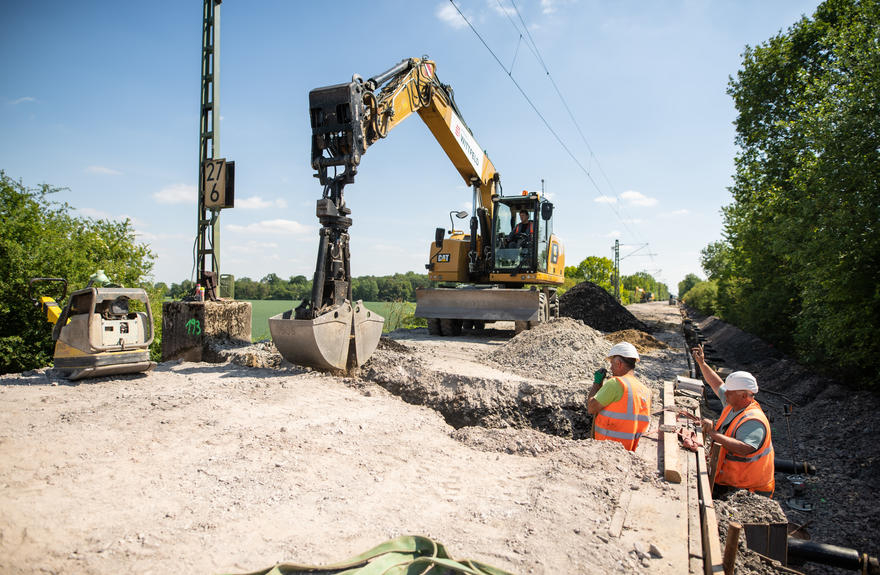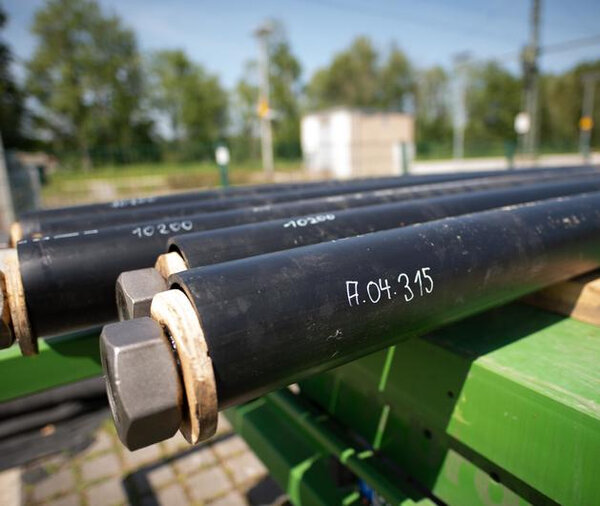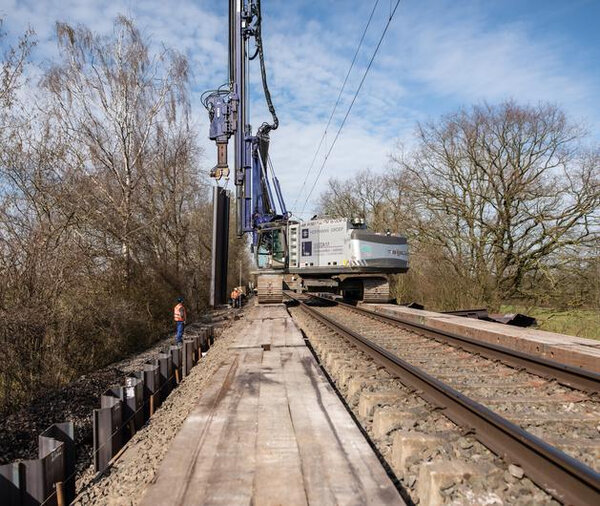In summer 2018, Deutsche Bahn discovered settlement cracks on the sides of the tracks at the upper embankment shoulder on two sections of Line 2000 near Werne and Ascheberg, which had caused track position faults. As a result, the speed of trains travelling on these sections was reduced to 70 km/h. This section of the railway line is now to be repaired: Eiffage Infra-Nordwest has been commissioned to restore the 2000 railway line between Lünen and Münster over a total length of just over 5 km. In the sections Werne (km 8.8 to km 12.2) and Ascheberg (km 26.3 to km 28.2), the embankment is to be stabilised with a cofferdam-like retaining structure, thus ensuring its serviceability.
The cofferdam is created by constructing sheet pile walls on both sides of the track, which are braced together with anchors via a belt system. The line has been closed since 6 January 2020. By the end of the scheduled closure on 12 August, 65,000 m2 of sheet piling with TM 20 and TM22 telescopic piles and 14,000 m of anchors had to be installed. The construction site on Line 2000 was particularly challenging in terms of logistics. This is because each anchor has its own predefined place. The anchors have each been given their own number. They are between 7.5 m and 10.9 m long and had to be installed at exactly the right place in the supporting structure. As leaders were used to insert the sheet piles on the very narrow section, it was therefore impassable for other vehicles. This meant that all the construction materials had to be in the right place before the machines 'blocked' the route - which required meticulous planning on the part of the team.
The section was completed step by step in a cycle plan, starting with the driving of the sheet piles, followed by the excavation and installation of the anchors and finally the concreting of the reinforced concrete beam. Initially, the work still had to be carried out on the track, which made the use of the leader even more difficult, as the device, including the sheet pile, had to be carried out with millimetre precision under the overhead line so that it could be installed in the right place. In mid-April 2020, the client decided to renew the tracks as well. Eiffage Infra-Nordwest took care of dismantling the tracks within two days. Parts of the overhead lines were also renewed on the line in Werne, making it much easier to carry out the signalling work.
The new tracks were later constructed by Eiffage Infra-Rail. At the beginning of July 2020, the client also specified that the cable trough and all LST cables should now also be renewed in both sections of track. The client extended the closure period for the additional work until 9 October 2020. Eiffage Infra-Nordwest dismantled the old cable troughs and cables, built 5.5 km of new cable troughs and laid 23,800 m of new cable.
The approximately 42 km long section of the 2000 line is part of the Dortmund-Hamburg link and is the shortest connection between the cities of Dortmund and Münster. The line was opened in 1928 and is partly embanked. It is single-track, electrified, free of level crossings and has a total of five crossing stations. On 9 October 2020, the 2000 line between Dortmund and Münster was put back into full operation with the renewed Werne and Ascheberg sections. The tracks can now be travelled on again at 160 km/h.


 DE
DE
 SWE
SWE


